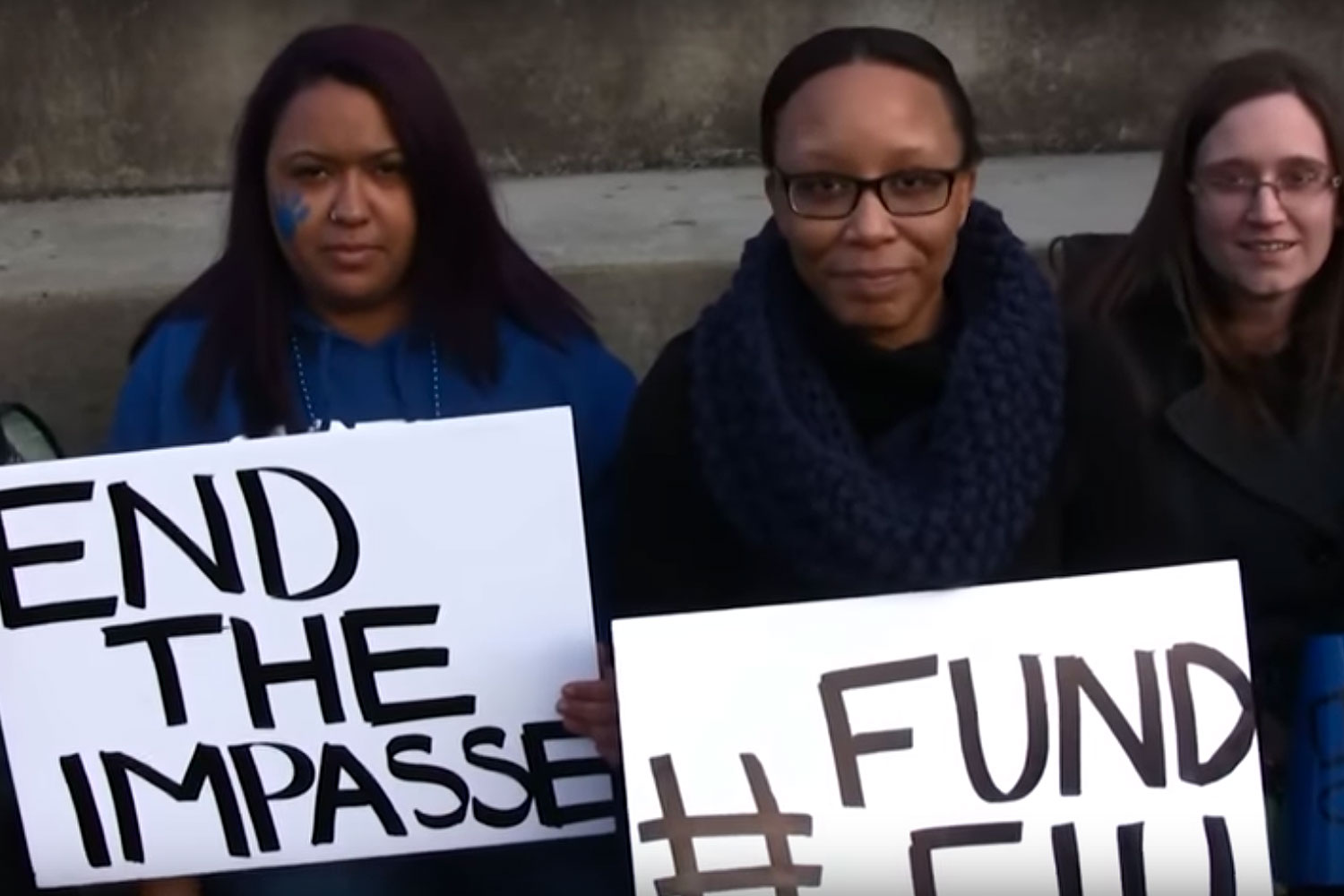Illinois's stopgap budget expires at the end of the year, threatening to sink the state back into further fiscal chaos. And little progress has been made—the governor is pushing for negotiations along his five-point plan, while Michael Madigan's spokesman says a budget has to come first.
Yet for as long as it's gone on, the budget crisis can still feel under the radar, perhaps because it has gone on for so long, and perhaps because a majority of Illinoisans say that it hasn't personally affected them: 62 percent, according to a recent Simon Institute poll, a number that surprised its director, David Yepsen.
One of the most venerable names in Chicago media is making an attempt to communicate the ramifications—dramatic for some, more subtle for all—of the stalemate. The 50-year-old documentary film studio Kartemquin Films, in collaboration with the Chicago-based magazine In These Times, just released its first episode in the eight-part series Stranded By the State, which looks at its impact on Eastern Illinois University, its students, and the town of Charleston. (A third of the student body receives financial-need-based MAP grants, which are up in the air yet again because of the stalemate.)
"It's a catastrophe, what's happening with the budget impasse," says Liz Kaar, the series's producer, director, cinematographer, and editor, who's worked with Kartemquin for almost a decade on films like The Interrupters and No Crossover: The Trial of Allen Iverson; her most recent work with the company was as an editor and co-director on Hard Earned, a six-part series on low-wage labor in America that aired on Al Jazeera last year. "But [the budget situation] had been getting worse, especially since the recession in 2008. Services were cut to the bone and now it's a catastrophe."
The idea of a collaboration between the two organizations predates the impasse. "We'd been wanting to do something for a while," Kaar says. "We have similar goals and missions. Talking it over, the budget impasse seemed perfect. We really wanted to do something that highlighted austerity policies, and the situation from a human-rights aspect. It's just bad policy—it costs us way more in the long run."
The second episode, which comes out this week, zeroes in on such an ounce-of-prevention program: the state's CCBYS (Comprehensive Community Based Youth Services), which targets runaways and youth who have been locked out of their homes in order to give them interventions, counseling, and a place to stay in the midst of a crisis. It costs less than $2,000 per youth per year, compared to $100,000 for DCFS residential placement and $110,000 for juvenile justice housing. But more than half of the CCBYS programs faced cutbacks or layoffs this year, and the uncertainty over next year's budget makes planning for the future difficult.
"They're in purgatory," Kaar says. "It's horrible. We've been building this infrastructure for decades; it's decades of investment being destroyed. It's not like a faucet you turn on and off. Once it's gone, you need twice as much money to restore it to normal."
Kartemquin has also had to adapt to cover the crisis. As long as it's been going on, the process of making a Kartemquin film often dwarfs it by comparison. "Most of the Kartemquin works are longform—over five years, you get dramas that unfold," Kaar says. "With short shoots you get less longitudinal storytelling. What I've focused on is the small moments you get. Why do they need to be videos? Seeing the subject, what's in their face, can be worth 1,000 words."
And like the administration and General Assembly, they have to work fast. "The most important thing," Kaar says, "is that the stopgap expires on December 31."



